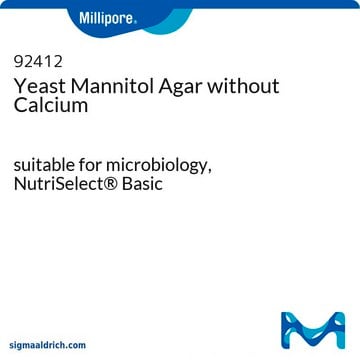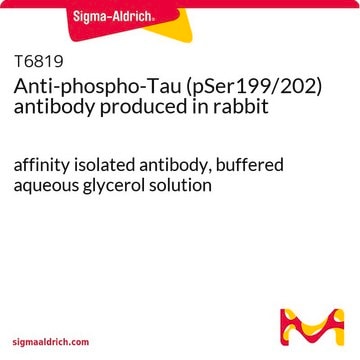Y3252
Yeast mannitol agar
suitable for microbiology, NutriSelect® Plus
Sign Into View Organizational & Contract Pricing
All Photos(1)
About This Item
UNSPSC Code:
41171605
NACRES:
NA.85
Recommended Products
sterility
non-sterile
form
powder
shelf life
limited shelf life, expiry date on the label
manufacturer/tradename
NutriSelect® Plus
technique(s)
microbiological culture: suitable
final pH
6.8±0.2 (25 °C)
application(s)
agriculture
environmental
food and beverages
life science and biopharma
microbiology
suitability
rhizobiaceae
Application
Used for cultivation, isolation and enumeration of soil microorganisms like Rhizobium.
Components
Ingredients (g/L):
Yeast extract, 1.00
Mannitol, 10.00
Dipotassium phosphate, 0.50
Magnesium sulfate, 0.20
Sodium chloride, 0.10
Calcium carbonate, 1.00
Agar, 15.00
Yeast extract, 1.00
Mannitol, 10.00
Dipotassium phosphate, 0.50
Magnesium sulfate, 0.20
Sodium chloride, 0.10
Calcium carbonate, 1.00
Agar, 15.00
Preparation Note
Suspend 27.8 g of Yeast Mannitol Agar in 1000 ml of distilled water. Boil to dissolve the medium completely. Sterilize by autoclaving at 15 lbs. pressure (121°C) for 15 minutes.
Footnote
We offer two media types: the superior granulated GranuCult® and the cost-efficient powdered NutriSelect® culture media, depending on your needs.
The designations basic, plus, or prime are added to indicate the quality control level, from basic quality control to standard QC plus to prime for full regulatory compliance.
The designations basic, plus, or prime are added to indicate the quality control level, from basic quality control to standard QC plus to prime for full regulatory compliance.
Legal Information
GRANUCULT is a registered trademark of Merck KGaA, Darmstadt, Germany
NutriSelect is a registered trademark of Merck KGaA, Darmstadt, Germany
Storage Class Code
11 - Combustible Solids
WGK
WGK 3
Flash Point(F)
Not applicable
Flash Point(C)
Not applicable
Personal Protective Equipment
dust mask type N95 (US), Eyeshields, Gloves
Certificates of Analysis (COA)
Search for Certificates of Analysis (COA) by entering the products Lot/Batch Number. Lot and Batch Numbers can be found on a product’s label following the words ‘Lot’ or ‘Batch’.
Already Own This Product?
Find documentation for the products that you have recently purchased in the Document Library.
Subba Rao, N.S.
Soil Microorganisms and Plant Growth, 142-142 (1977)
Our team of scientists has experience in all areas of research including Life Science, Material Science, Chemical Synthesis, Chromatography, Analytical and many others.
Contact Technical Service






